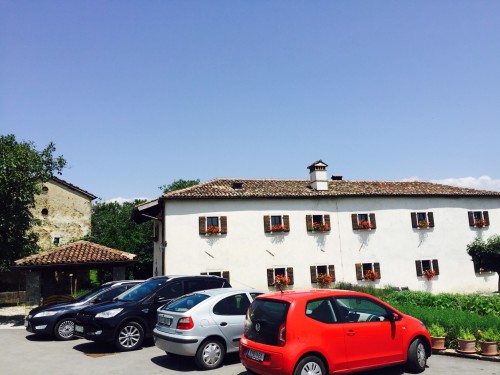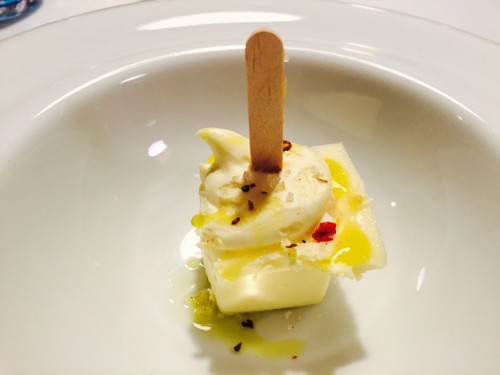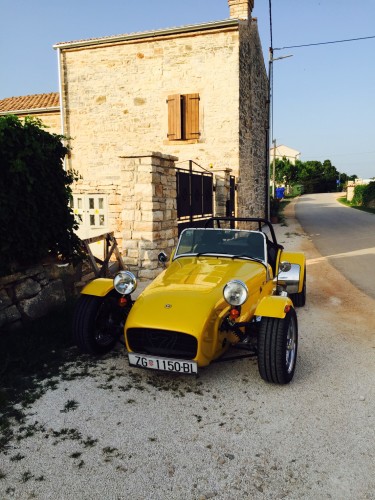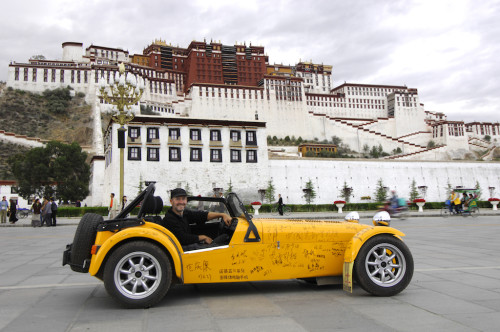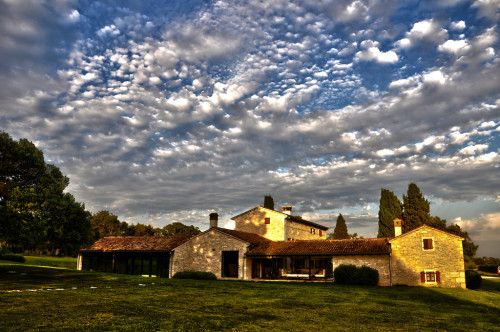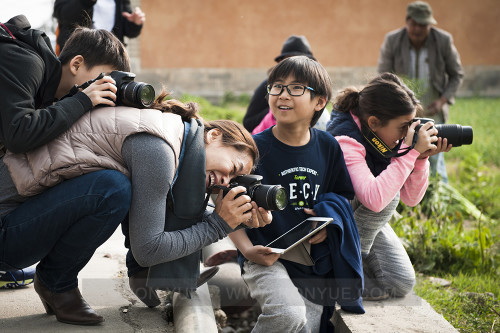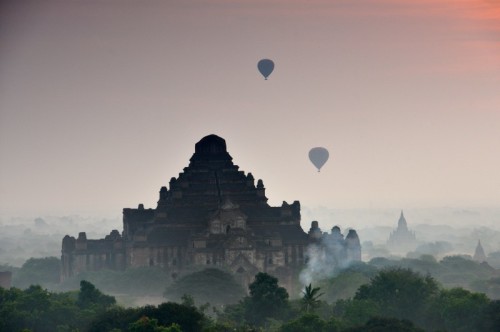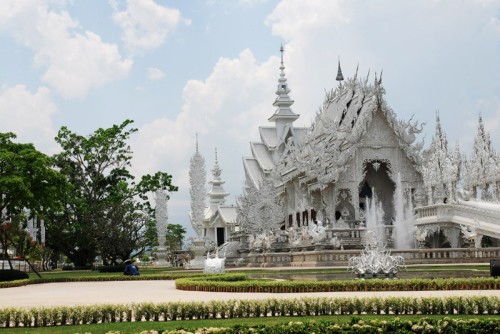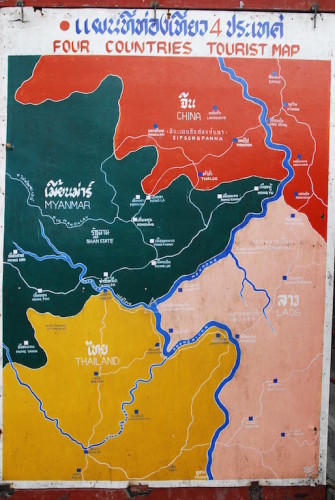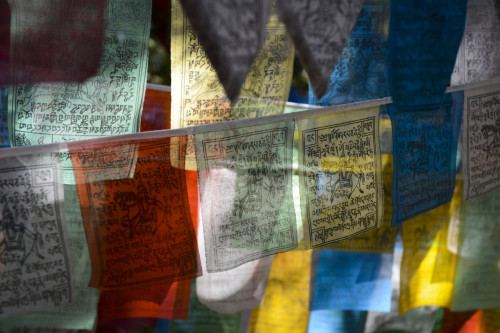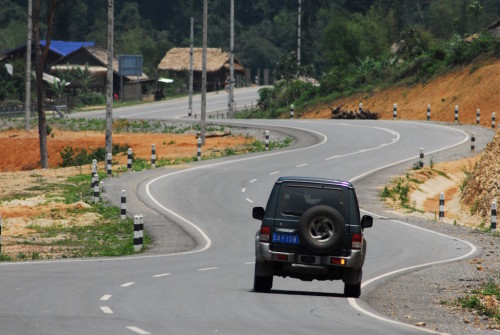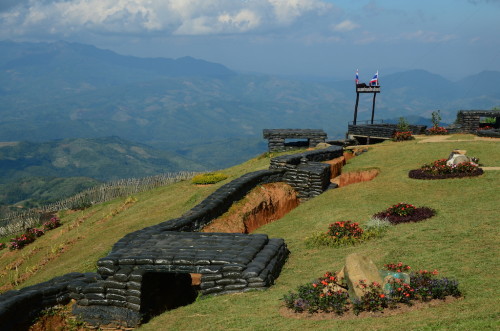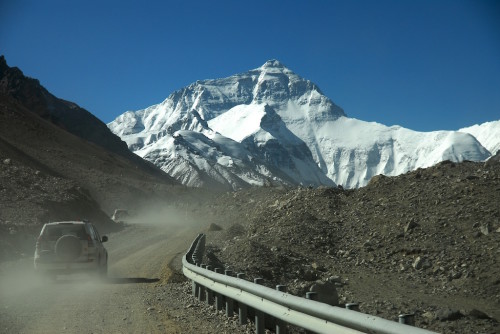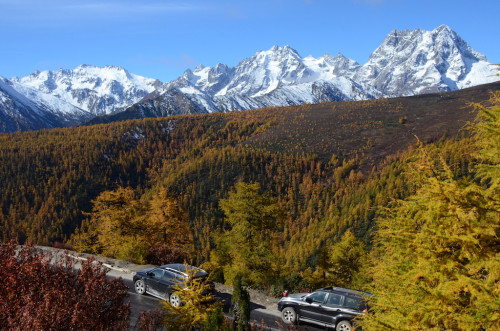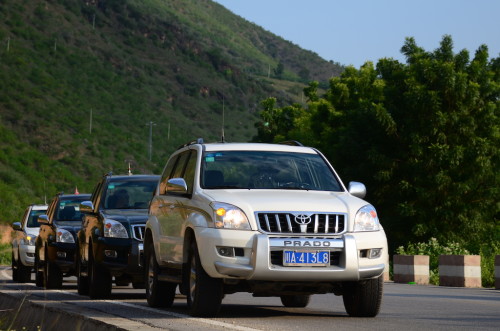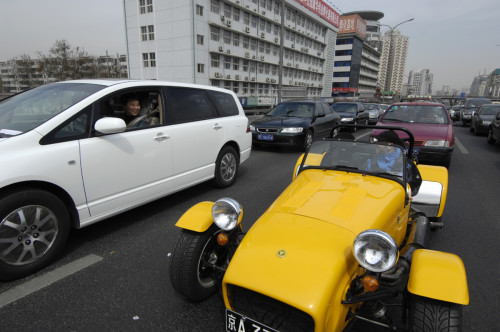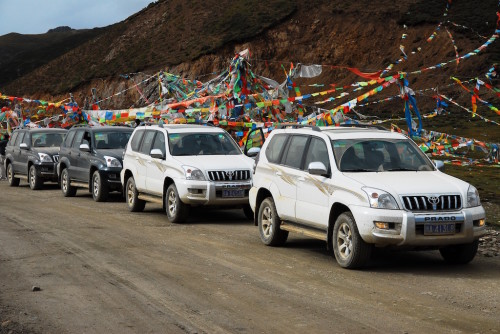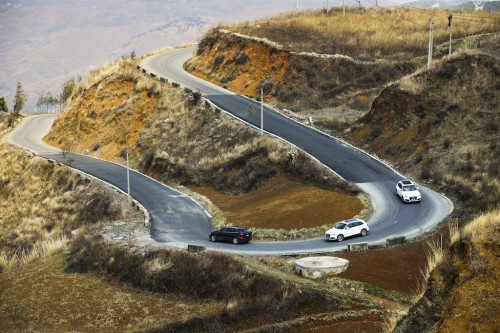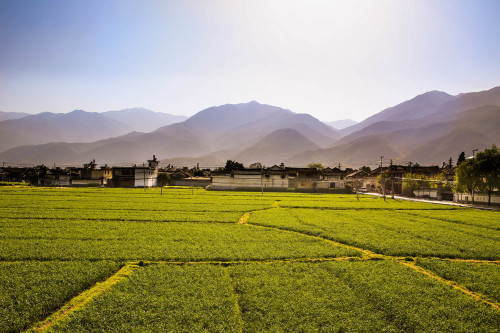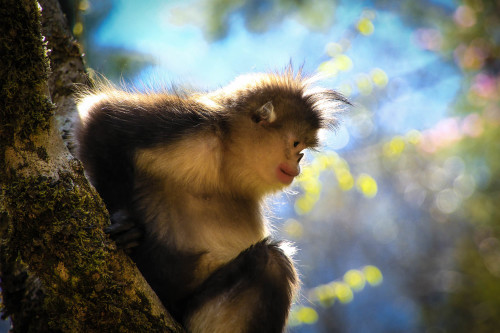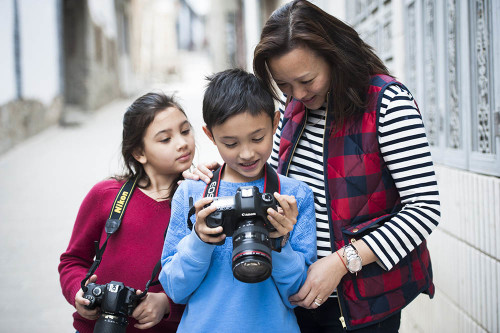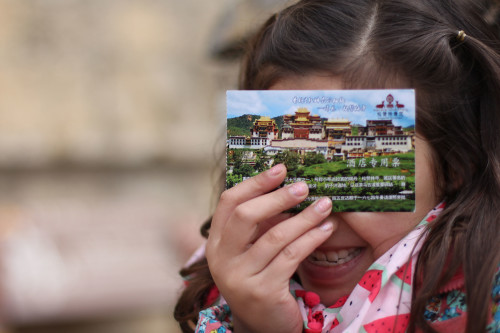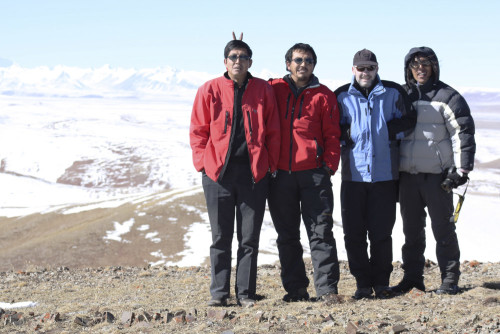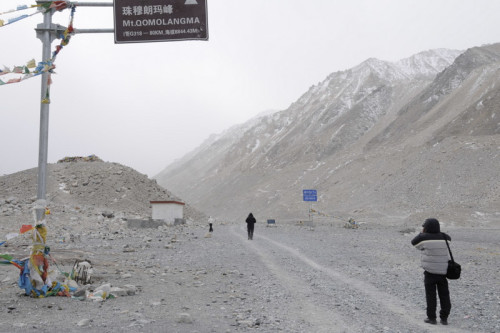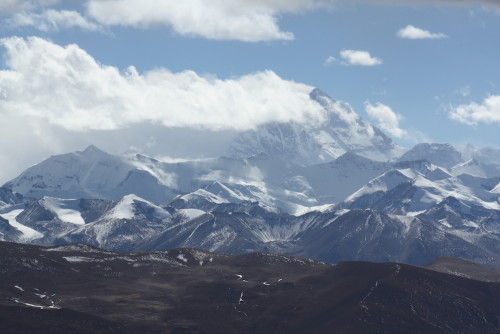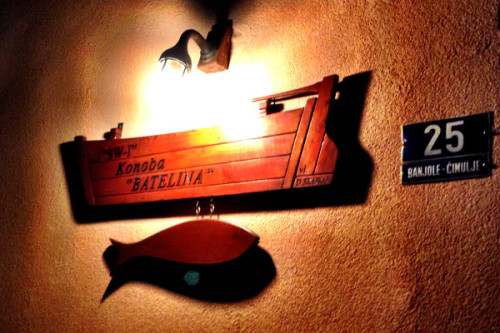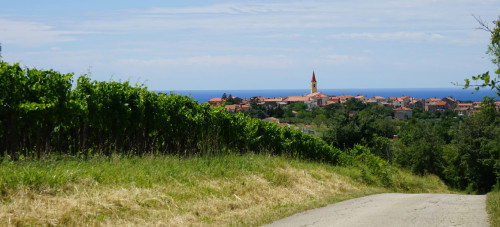Category: Uncategorized
Posted on 5 Aug, 2016
(Here are Part 2 “Impatient to Run Free” and Part 3 “I know one when I see one” of this trilogy.)
“You’ve got a dream job. You’re always on holiday, aren’t you?” is what we at On the Road hear all the time. I love what I do, but one long holiday it is not. So what is it like when we’re on the road?
Take one day earlier this summer, June 23, as an example. Pei Fen and I were in Slovenia researching our new European itinerary. We left Ljubljana, the country’s capital, at 8am. Our first stop was at the Postonja Caves, although we just had enough time to make a GPS waypoint – the trip down into the cave was squeezed in later in our trip. Our next stop was an hour’s drive away in Lipica, the stud farm for the famous Lipizzaner horses. From there we drove an hour out of our way for lunch in a restaurant recommended by Slovenian friends.
After an excellent lunch (more on which later), we had a long drive south and into Croatia for a 3pm appointment with Istria’s regional Director of Tourism. By then the temperature had reached 37°C, although we kept the air-conditioning turned off in our car, relishing the dry heat after weeks of wet weather. After the meeting (held in a darkened room with no air-con and cups of room-temperature water, transforming our relish for the heat into a strong desire for a/c), we revved up Little Red – the colour of our VW Up! was a shade of red that made it look as though it was trying to impersonate a Ferrari – and headed farther south to visit one of our selected hotels for an update on the progress of their renovations and a detailed discussion of the arrangements for our first group of guests.
By this time it was 7pm, but we weren’t finished yet! Pei Fen and I went to find the team hotel we had researched and booked. But after bouncing along a pot-holed dirt road, turning left, right, back, and forward again, we just weren’t able to find it. So, to Plan B! “I know of another place, it’s a bit more expensive, but never mind, let’s call them. I hope they’ve got rooms…” We shamelessly name-dropped the Director of Tourism, finagling their last two rooms, drove there***
, checked in, and headed out again, at 8pm, on another 45min drive to a restaurant I had tried before and wanted Pei Fen to experience: “Believe me, it’s awesome…and totally worth the drive!” In the event, though, the dinner took two-and-a-half-hours, because the chef wanted to showcase her best, and each dish was too salty – even the ice cream. By the time we returned to our hotel it was after midnight, and we had to be up by 5:45am for another, even longer day.
What a day! Does it still sound like a dream job? More like a nightmare perhaps. And yet this day was great because, amidst all the busyness, two experiences made it as special as any I can recall in a long, long time. One was seeing the majestic Lipizzaner horses; the other was the trip to find our lunch restaurant. Stay tuned for the stories of each of these magical experiences.
*** Believe it or not, on the way to our hotel we came across a gleaming yellow Caterham Super 7, exactly like Little Yellow (小黄) which I drove 21,000km across China in 2007.
Interested in our new itinerary? Please see here the Journey Dossier for Austrian-Hungarian Lands I: Vienna, the Adriatic, the Alps and Prague (12, 10 or 8 Days)
Posted on 21 Jul, 2016
Why do we often feel that “time flies”, as if the past week, months or year, has been shorter than its allotted number of hours? I often ask myself “Where has the time gotten to?”, but when I stop and recall exactly what I’ve been doing, I’m always amazed by how much can fit into every waking day, week or month that makes up my life. This is as it should be because one life is all we’ve got.
Here are some of the high-lights of what’s happened at On the Road since Easter.
Looking back…
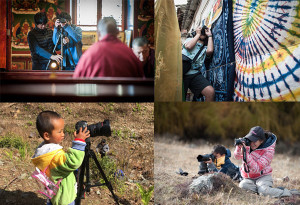 A fabulous journey for the entire family
A fabulous journey for the entire family
In early April five families joined our most talked-about family trip yet: one that combined all the fun elements of our kids-friendly journeys with photography and Ron Yue as the coach. The idea? A chance for parents and their children to engage in a shared and meaningful activity!
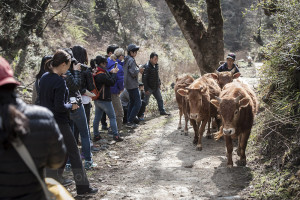 Photography has the power to inspire anyone, young or old, to see beauty where others see drabness; has the power to help simplify one’s life; the power to let us recognize that even in this world of insta-anything – Instagram, instant noodles, instant gratification – patience has value. Wow! “The best family holiday ever” was the travelers’ refrain.
Photography has the power to inspire anyone, young or old, to see beauty where others see drabness; has the power to help simplify one’s life; the power to let us recognize that even in this world of insta-anything – Instagram, instant noodles, instant gratification – patience has value. Wow! “The best family holiday ever” was the travelers’ refrain.
Stories on our Detours Blog
Our Detours blog essays are timeless…
-
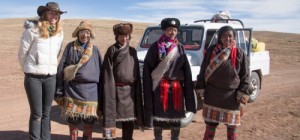 In “The Very Best Souvenirs” – Jo wrote about travel and long-lasting memories…
In “The Very Best Souvenirs” – Jo wrote about travel and long-lasting memories… -
In “You Must Be Joking! Driving Holidays With Kids In China” – Jo – busy in April! – recalls how, against all expectations, our family-oriented journeys in Yunnan have turned out to be ones our guests have raved about the most…
-
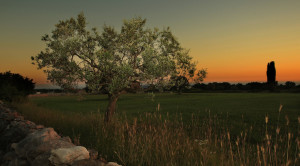 In the first of a two-part series, Peter wrote “Discovering Istria: Part I – Of Optimism & Teo-The-Receptionist-Porter-Waiter-Chef” after his most recent research trip in Europe. Europe is so small (compared to Asia), and yet, there is still so much to discover…
In the first of a two-part series, Peter wrote “Discovering Istria: Part I – Of Optimism & Teo-The-Receptionist-Porter-Waiter-Chef” after his most recent research trip in Europe. Europe is so small (compared to Asia), and yet, there is still so much to discover…
-
 In Part II, Peter continued to share what he’s discovered in northern Croatia in preparation for launching On the Road’s new Europe itinerary…
In Part II, Peter continued to share what he’s discovered in northern Croatia in preparation for launching On the Road’s new Europe itinerary… -
In “A Glimpse Of Everest” Jo tells the story of her first drive to Mt Everest and her adventures along the way (including a BBQ at 5,000m altitude)…
-
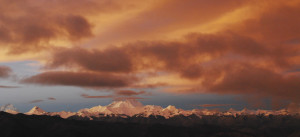 And in a flash of exuberance, we also published another one of our Europe videos: “An Alpine Symphony…come watch this On the Road in Europe video!”
And in a flash of exuberance, we also published another one of our Europe videos: “An Alpine Symphony…come watch this On the Road in Europe video!”
Looking forward…
New itineraries for 2017 – Lands of Silk & Snow
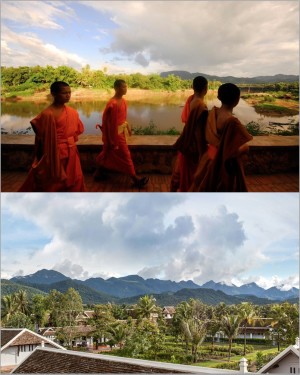 Thanks to our new car rental partner in Lao, we will be offering from spring 2017 onward an exciting new journey from Luang Prabang in Lao to Lhasa in Tibet.
Thanks to our new car rental partner in Lao, we will be offering from spring 2017 onward an exciting new journey from Luang Prabang in Lao to Lhasa in Tibet.
Driving from the rain forests of the subtropics to the glorious Himalayan mountains and from the land of one branch of Buddhism to that of another will be an unforgettable experience.
And if you have yet more time, then consider going on to Mt. Everest by joining our “Roads on the Roof of the World” journey immediately following.
New itineraries for 2017 – Austrian-Hungarian Lands (I)
 For the last twelve months we’ve been making moves to introduce our first scheduled journey in Europe. It will take in four countries (Austria, Czech, Slovenia and Croatia) and give you a glimpse of Vienna, Prague, The Alps and the Adriatic.
For the last twelve months we’ve been making moves to introduce our first scheduled journey in Europe. It will take in four countries (Austria, Czech, Slovenia and Croatia) and give you a glimpse of Vienna, Prague, The Alps and the Adriatic.
• drive on splendid roads, some leading through wine regions, others across the Alps, and yet others running along winding coastlines
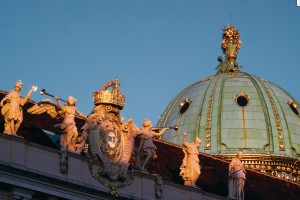 • stay in grand city hotels and small boutique residences in the countryside
• stay in grand city hotels and small boutique residences in the countryside
• become acquainted with the cultural achievements of Austria-Hungary – preserved and celebrated to this day
• meet a variety of local people who make this region so vibrant and distinguished
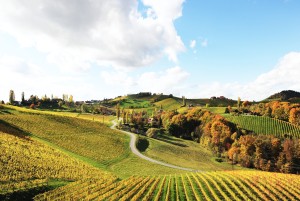 • indulge with us in the wonderful and varied produce, cuisines and wines found in this region
• indulge with us in the wonderful and varied produce, cuisines and wines found in this region
Stay tuned for the formal launch of this new European itinerary.
New Cars…
 In May, we were delighted to announce…
In May, we were delighted to announce…
… that at last we’re able to offer you cars that we have wanted to give you all along: new models from Audi – Audi Q5, Audi A8, and others –
 … through our new partnership with Hong Kong-based Dah Chong Hong Holding Ltd (大昌行集團) Motor Leasing, a subsidiary of one of China’s largest listed company.
… through our new partnership with Hong Kong-based Dah Chong Hong Holding Ltd (大昌行集團) Motor Leasing, a subsidiary of one of China’s largest listed company.
… The new management of Dah Chong Hong in China has been working with On the Road Experiences in China for many years…we know we are and you will be in good hands!
We feel as if a new era is beginning…more than ever are we confident in saying that you will be able to enjoy all the pleasures of a driving holiday on the roads of China and South East Asia.
For those of you curious exactly why we’re so excited to announce the availability of a new car, here are two stories about what renting cars in China used to be like…
-
My first experiences renting cars in China in my “Be sure to return it empty” story
-
And some pieces of advice should you try to do it yourself
We wish you all the best for the summer…stay cool, recharge, dream as if you live forever (as James Dean’s quote goes…)…
Other Travel Inspirations for Autumn & Winter
Family Adventures: Travel Photography in Yunnan – Oct 23, 2016
Where?
-
In a few words – Kunming – Xizhou (near Dali) – Lijiang (UNESCO World Heritage Old Town and surroundings) – Tacheng (in the Three Parallel Rivers) – Deqin (by Meili Snow Mountain) – Zhongdian (Sumtseling Monastery)
Journey Dossier – Family Adventures: Travel Photography in Yunnan
How long? 8 or 10 days
How much? Starting from CNY30,400/person
Audi Q5 Upgrade Value: CNY400/day/car
A Burmese Journey: From the Golden Triangle to the Bay of Bengal –
Nov 9, Nov 29, 2016 and Feb 12, 2016
• Our ALL NEW, UNIQUE driving journey in Asia
• Click here for more info
In a nutshell
What?
• travel from northern Thailand to the Bay of Bengal
• enjoy must-see highlights (Inle Lake and Bagan) and …
• … discover hidden gems of this fascinating land between China and India
How long? 12 or 16 days
How much? Starting from USD7,200/person (For the Nov 9 departure, we offer a 7.5% discount.)
From Yunnan to the Lanna Kingdom – Nov 4, 2016
Our most popular, short three-country journey
Click here for more info
Read here a story about the UNESCO World Heritage rice terraces…
In a nutshell
What?
• The unique, must-see-once-in-your-life Yuanyang Rice Terraces
• The land of Ten Thousand Rice Fields: Yunnan’s Xishuangbanna
• Colorful, tranquil northern Lao
• Crossing the Mekong: the border between Lao and Thailand
How long? 11 days (can shorten to 9 if need be)
How much? Starting from CNY39,800/person
From Shangri-la to the Lanna Kingdom – Over Christmas and New Year Dec 22, 2016
An unforgettable way to close out 2016 and start the new year!
Click here for more info
In a nutshell
What?
• Travel from Shangri-La in Yunnan via northern Lao to Chiang Mai in Thailand
• Luxury, Comfort and Adventure all in one
• Christmas in wintry Shangri-La
• New Year in subtropical Thailand
How long? 8 or 12 days
How much? Please enquire for this special Christmas & New Year journey.
Posted on 14 Jun, 2016
Europe is the cradle of the motorcar and private motoring. Ever since Karl Benz’s 1886 Motorwagen, people have taken pride in owning a car and being in its driver’s seat. 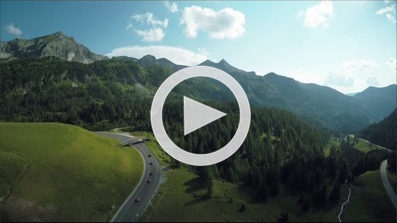 Driving in a beautiful car bespeaks privilege, freedom, privacy, and, especially in an open-top car, allows one to be in communion with the elements and natural beauty: soak up the sunshine, feel the wind in your hair, smell the fresh air and the scents of freshly cut grass. Besides, there is the sheer pleasure of being in control, of directing the course of travel: to turn, to go, to stop where and when you feel like it.
Driving in a beautiful car bespeaks privilege, freedom, privacy, and, especially in an open-top car, allows one to be in communion with the elements and natural beauty: soak up the sunshine, feel the wind in your hair, smell the fresh air and the scents of freshly cut grass. Besides, there is the sheer pleasure of being in control, of directing the course of travel: to turn, to go, to stop where and when you feel like it.
 These are pleasures that Europeans were the first to enjoy. Most evidently, these are pleasures that can be shared by couples. While it is often the gentleman who takes the driving seat, it was in fact Bertha Benz who undertook the first driving journey (with their two children) in the world. Driving journeys in a cabriolet are something that women have enjoyed ever since, whether as companion or driver.
These are pleasures that Europeans were the first to enjoy. Most evidently, these are pleasures that can be shared by couples. While it is often the gentleman who takes the driving seat, it was in fact Bertha Benz who undertook the first driving journey (with their two children) in the world. Driving journeys in a cabriolet are something that women have enjoyed ever since, whether as companion or driver.
 Add to this the many other delights of a driving holiday in Europe – private concerts or car museums, the dazzling sights of sparkling Alpine lakes, the smell of sweets freshly baked, a home-cooked meal in a restaurant in the middle of nowhere and time together with friends or family… a driving holiday in Europe is the perfect blend of sweet adventure and world-class comfort!
Add to this the many other delights of a driving holiday in Europe – private concerts or car museums, the dazzling sights of sparkling Alpine lakes, the smell of sweets freshly baked, a home-cooked meal in a restaurant in the middle of nowhere and time together with friends or family… a driving holiday in Europe is the perfect blend of sweet adventure and world-class comfort!
Visit our European journeys page for itinerary ideas. And remember: soon we will introduce our first scheduled, European journey for 2017.
Posted on 6 Jun, 2016
In October 2008, my wife Angie and I spent a few days in northern Thailand. While visiting this part of the Golden Triangle, we chanced upon a rusty map of the region. “Look,” I said to Angie, “two months ago I was here,” as I pointed to Xishuangbanna, the southernmost region of China’s Yunnan Province. (‘Xishuangbanna’, 西双版纳, is the sinicised version of the Thai word Sipsong Panna ( สิบสองปันนา) and means ‘twelve thousand rice fields’.)
“So close, eh?” Angie mused, “I wonder whether you could drive from there to here. Wouldn’t that be something?!”
“You’ve got to be kidding me,” I replied, “There’s borders to cross and who knows if there’s even a road.” Having only just managed to organise our first driving journeys in China, the idea of crossing borders seemed, to me, unfathomable. In those days, whenever an idea came up, my brain was inevitably troubled by the question of how to make it happen, and from that often flowed a stream of reasons why it couldn’t be done. Angie, by contrast, is seldom bothered by such details.
Later that day I reluctantly pursued the idea with her. Wouldn’t it be something to drive from the foothills of the Tibetan Plateau in northern Yunnan down through Laos and the Golden Triangle to Chiang Mai, and to see China merge into South-East Asia, turn by winding turn? It was a powerful idea, but “how?”
***
I grew up in another Golden Triangle of sorts, in Bregenz, a small town by the eastern shore of Lake Constance where Germany, Austria, and Switzerland meet. No opium poppies there, I can assure you: the only sources of inspiration are reflections in crystal-clear lakes and the herb-scented mountain air.
Shopping in Switzerland? Lunch in Germany? Dinner in Austria? All in one day? Easy! As I child I regarded driving across borders as an everyday occurrence, but since moving to Asia I have gained a newfound appreciation for the romance – and administrative complexities – that such overland journeys can inspire.
***
Fast forward to April 2009. Angie and I have just landed in Shangri-La. The sky is overcast and snowfall has dusted the hilltops. While eating breakfast we meet the hotel manager and tell her about the journey we are about to make. Her eyes light up, “If you enjoy driving, then you must take the back road to Lijiang – let me show you…” I finish my toast in one bite and drain my coffee cup while Angie knocks back a motion sickness pill. And then we’re on our way.
The main road from Zhongdian to Lijiang is shown on my map as a thick red line. The road that we take is shown as a single pencil-thin line, snaking between the two towns. The hotel manager was right – the road is incredibly beautiful, winding over high passes before descending to the Yangtze at Tiger Leaping Gorge, where the river roars through a deep gorge beneath looming cliffs.
After arriving in Lijiang that evening, we wander the cobbled streets, bemused at the sheer number of people visiting this UNESCO World Heritage Site. From Lijiang we drive south along excellent highways to Dali, on the shore of Lake Erhai, and then to Kunming and south again to Jinghong, the largest town in Xishuangbanna.
By the time we arrive in sleepy Jinghong, with its palm tree-lined streets and Thai-style temples, it’s clear that we are on the edge of South-East Asia. The region’s main ethnic minority, the Dai, are closely related to the Thais and in the countryside we drive past groups of sarong-clad Dai women with flowers in their hair.
From Jinghong we continue our drive on another wonderful road to the China–Laos border at Mohan, where we make a bit of history: Angie and I are, according to everyone we ask, the first Westerners to drive a China-registered rental car across this border. What I had taken for granted back in the “Golden Triangle” of my youth does, indeed, mean making history here…
In Laos, Route 3 connects the China-Laos border with Huay Sai on Laos’ border with Thailand, cutting south-west diagonally across the country. At that time, Route 3 had been recently rebuilt, and the modern road contrasted starkly with the villages it runs through, where villagers’ lives seem untouched by the twenty-first century.
Later the same day we arrive at Huay Sai and take a rickety looking car ferry to Chiang Khong on the Thai side of the border. After a long day – driving in three countries and over 400 kilometres – Angie and I treat ourselves to a stay at the lovely Anantara Golden Triangle resort.
The next morning, wholly refreshed, we drive back up to the map of the Golden Triangle, where Angie had had her idea six months previously. We look at the battered map in its rusty frame before turning and gazing out towards Burma and Laos, shaking our heads and agreeing “Now, that really was something…”
Never, ever let questions of “How?” stand in way of pursuing your ideas!
Since that first trip, we now have multiple crossing-border itineraries in Asia allowing you to step into our footsteps:
- Yunnan via Laos to Thailand
- From Shangri-La to the Lanna Kingdom is exactly the itinerary that Angie and I explored in 2009.
- From Yunnan to the Lanna Kingdom starts “further down” in Kunming, the capital of Yunnan, but includes the “Mirrors of God” Yuanyang rice terraces, a must-see once in your life.
- Yunnan via Laos to Vietnam – Our Summit to Sea itinerary takes you from one UNESCO World Heritage old town, Lijiang, in Yunnan to another, Hoi An, right by the South China Sea.
- Burma – Our From the Golden Triangle to the Bay of Bengal itinerary is a magical exploration of Burma, including out-of-the-way, hidden gems and well-known, must-see stops.
Posted on 16 May, 2016
Date of writing: May 2016
In many desirable driving holiday destinations (Switzerland, the US, Australia, New Zealand, Japan) renting a car is worry-free; everything from insurance to the quality of the cars is, more or less, guaranteed. China’s rental car market is, by comparison, still underdeveloped and there are many things to consider before renting a car. But as my essay “Be sure to return it empty” shows, things are improving…
In what follows, I summarise the current state of affairs from the point of view of an individual traveller interested in renting a car in the remoter regions of China.
Rental Car Companies – International car rental companies (for example, Avis and Hertz) have presence in China. There are also several local, large, and reputable companies such as 1Hai in the market. But you will also find thousands of operators who call themselves ‘car rental companies’ but usually hire out privately-owned cars. Beware of these: they may not have a car rental license. If you’re stopped by the police, you may face enquiries and delays. If you have an accident, the insurance company may refuse to pay up.
Choice of cars – The choice of cars is limited. Most large car companies focus on the mass market and provide only very basic cars. Renting a nice SUV or a sports car is, especially in remoter regions, very difficult if not impossible.
Insurance – Insurance coverage levels are, by international standards, low and it is difficult to know in advance how much the insurance company will pay under what circumstances. Certain insurance coverage common internationally is impossible to obtain in China. CDW (‘collision damage waiver’) coverage – whereby you as the renter pay a bit extra to lower the insurance excess – is an example. Overseas it is a matter of course that the car rental company will handle the claims processing on your behalf. Don’t count on this in China.
Driving License – In order to drive in China, you need a Chinese driving license. For overseas tourists, China offers a so-called ‘temporary driving license’. Car rental companies assume you have a valid Chinese license, permanent or temporary and will not assist you in applying for one.
Crossing Borders – In Europe, crossing borders with low-to-mid-range rental cars is in many cases possible, especially if one is willing to pay a top-up insurance. Very few European rental car companies allow you to take upmarket cars into the remoter regions of Europe. In China, none do.
Deposit – Depending on the location and the company, you may be asked to pay a security deposit in cash.
GPS & Maps – While China’s GPS navigation systems are improving rapidly, they do not incorporate real-time information about traffic conditions and road closures. If you travel in remote regions, you might drive hours only to discover that you have to turn around. Printed maps in Chinese language are good and easily available; English language maps are available, too, but not very detailed.
One-way rental – One-way rental services are common overseas, at least for common, popular cars: you can pick up a car in one location and drop it off in a different one (sometimes you have to pay extra, of course). In China, this service is still very rare.
As you can see, there are many obstacles that stand in a tourist’s way of renting cars in China. At On the Road Experiences we have removed all these hurdles. All you need to do is come and enjoy a fabulous driving journey in China or one of its neighbouring countries!
The first car I ever drove in China was one I owned. This was bug-eyed Miss Daisy (or 小黄 in Chinese). A Caterham Super 7 R300, she was the granddaughter of Colin Chapman’s Lotus 7, a car meant for the track that had somehow finagled a public road worthiness certificate. The R300 was sold as a kit you could assemble yourself; for less mechanically minded drivers, Caterham also sold a fully assembled version.
Getting this car into China and equipping it with a proper (no-funny-money) Beijing license plate took a year. When the customs official laid eyes on her at the port in Tianjin, he laughed, saying, “That’s not a car, that’s a toy!” (这不是个车,这是个玩具). It took six months to convince him otherwise.
Next came the ordeal of going through what in the UK is called “single vehicle approval”, that is, the procedure of registering an unusual car. (At the time there was only one Caterham in China, mine.) I was prepared to hear many official reasons why Miss Daisy might not be licensed, except for the one that I was given: that she did not meet the city’s emissions standards. Yes, Beijing, one of the world’s more polluted capitals, has stringent emissions standards in place. It took another six months for her to pass the test. (You can read about my journey through China with Miss Daisy here.)
As a result of this prolonged and stressful experience, I concluded that renting cars – even though they might not be as special as Miss Daisy – was the way to go.
And so when I had the opportunity to drive in Sichuan, my friends and I rented a car in Chengdu. Back in 2005, this was my first lesson in renting cars in China. I got myself in trouble on day one when I found myself being pulled out of some mud by a tractor. There are many reasons – including my own stupidity – why this happened, but the main reason, to my mind, was that the letters “4WD” were emblazoned on the rear door of the SUV. Surely a four-wheel drive could tackle a bit of mud? Perhaps, were it not for the fact that the “4WD” was an expression of the carmaker’s aspiration – mere decoration, rather than a statement of fact.
Not long after this I rented another SUV in Chengdu. I had arrived a day earlier to take care of some business, then the following day I picked up the car and raced to the airport to meet my wife. The car ground to a halt shortly after the tollbooth on Chengdu’s airport expressway. “What the hell?” I grumbled, “How on earth can I be out of petrol after less than 15km?”
After a kind gentleman helped me fetch a canister of petrol, I picked up my wife – who was fuming – and drove straight back to the rental car company to complain. The store manager looked at me as if I came from another planet. “You pick it up empty, and you return it empty, that’s how it works,” he explained. “Not where I come from! You pick it up full and return it full!” He looked at me with an expression that said “Well, you’re in China, not wherever it is that you come from…” and was about to move on from the incident when he decided that I needed an explanation. “We can’t do it like that, Sir. Actually, we tried. But it didn’t work. Many cars would be returned with the fuel gauge needle showing that the tank was ‘full’.” I smiled, thinking smugly, “See, it works!”, but he continued: “Yes, the tank was fuel, but what was in it wasn’t petrol!”
For our first few journeys with customers, we used “rental SUVs” we had procured for our guests. The trouble was, I later discovered, that the “rental SUVs” where, in fact, not rental cars, but private cars that the owners had made available to the “rental car company” to be let to customers. Luckily, we were never stopped by the police to check, and we didn’t have any accidents – the insurance would promptly have refused to pay, I was told.
How do you start a driving holiday business in an environment like this? In 2008 we decided that we needed good, properly licensed cars: it was the beginning of our good relationship with Avis China. We got what we wanted – new Toyota Prado 4.0ls, rental license and all. But there was one snag: we had to lease them for five years. This was good for our guests and good for our reputation, but bad for the company’s pocketbook as we didn’t have enough business to utilize these gems fully.
By 2013 Hertz (but sadly not Avis) began to purchase Toyota Highlanders for their short-term rental fleet in Kunming. We have been using these ever since, but now there is another snag: while overseas rental car fleets are frequently renewed (usually in less than six months, in some cases in as little as three), the Hertz Highlanders from two years ago are still in the fleet, and they show it. Everywhere in the world we humans has been equipped with a mental switch that flicks between two positions; “I own it, I care”, and “It’s a rental, for Christ’s sake, who cares?” In China the two switch positions – while gradually approaching each other – are still very far apart.
Last year, the boss of Avis China moved from Avis to DCH (大昌行) Motor Leasing, a subsidiary of one of China’s largest listed companies. He called us and said “I’ve got news for you!” As a result of his move and our long relationship with Avis, we’re now able to offer our clients the option to upgrade to brand new Audi Q5s. 一步一步 (“one step at a time”) things are getting better indeed!
Posted on 13 May, 2016
I’ve been running photography journeys with On the Road Experiences since 2011. Over the last six years parents have brought their children along on several journeys, which led me to think about organising a family-orientated photography trip.
The children I’d worked with always impressed me by how quickly they learned technical concepts, by their enthusiasm and by the quality of their work. Wouldn’t it be fun for families to enjoy learning about travel photography together? Taking throwaway photos is such a part of everyday life now – think of Instagram and Snapchat – that I thought it would be great to try and inspire young photographers (and their Snapchatting parents) to create images that they would treasure for a lifetime.
Buoyed by these experiences, we put together a special itinerary and recently ran our first family photography trip. Despite past successes, I was still apprehensive how the photography element would work with a full group of 8- to 13-year olds. Perhaps they would be bored – what if the activities we had planned didn’t seem new or special enough? Please click here for detailed itinerary.
These doubts quickly dissipated and I found myself busier than usual as I coached both kids and parents out in the field, and answered a host of questions on different topics. One afternoon after photographing Yunnanese snub-nosed monkeys in a nature reserve outside the remote town of Tacheng,
I had planned to stay in the lounge of our beautiful lodge to help guests review their photographs. The afternoon turned into a four-hour long introduction to Adobe Lightroom, spurred on by endless questions from parents and kids about how to edit and manage their photographs.
It was wonderful to see the kids sharing their photos with each other and their parents,
especially when they managed to capture a particularly special image, and to watch the older kids helping the younger children. More than once, I noticed a child taking their parents’ camera hostage and refusing to give it back! Parents commented happily that their children were spending more time looking and seeing things more closely, as well as less time playing games on their iPads.
Our final night wrap-up session brought both hearty laughter and amazement as we all shared our favorite images from the trip. When I hear comments from parents such as “I can’t believe that a trip with children happened where nothing went wrong!” or when a child tells me that it was the “best trip I’ve ever had in my life”, it makes all my work worthwhile. Now I’m just looking forward to the next one…
Posted on 10 May, 2016
In November 2010, Peter and I spent a few weeks in Qinghai and Tibet researching new itineraries – routes that became Roads on the Roof of the World and the Qinghai version of Tibetan Highlands.
We had enjoyed an adventurous start to the trip, including an attempt (quickly abandoned) at winter camping in Tuotuohe, and what must have been one of the longer picnics in Qinghai’s history as we waited for an over-ambitious lamb stew to cook 5,000 metres above sea level. But, as we arrived in Lhasa, fatigued but at least thoroughly acclimatised, the trip’s highlight – Mount Everest – still lay ahead.
After a few days in Lhasa, we set out for the mountains. As we drove west of Shigatse, human settlements thinned out dramatically and the landscape grew steadily more otherworldly. Bands of ochre sediment jutted out at strange angles, hinting at the violence of the collision that forced the Tibetan Plateau three miles into the sky – and pushed the mountain peaks higher still. Eventually, we came to Baiba.
Baiba is a rugged little town that sits beside the highway to Nepal. Nobody would choose to stay here, except for the fact that it is conveniently close to the turn-off for Mount Everest’s North Base Camp. We stopped here one evening, four days out from Lhasa. After looking at hotels and restaurants and an hour spent sitting wrapped in blankets, talking and playing cards by candlelight, we called it a night.
The following morning our alarms rang well before dawn. Bundled up like onions in thick layers of clothing, we loaded the cars and set off. The beginning of the journey was stop-start as we passed through checkpoints and turned onto the gravel road (now paved) to Base Camp. As we climbed through a long series of switchbacks, suspense grew. We were climbing up to Pang-La, the first pass from which Everest is visible – would the peak be clear?
I was sitting in the first car in our two-car convoy. As we crested the pass, I used the walkie-talkie to report, incisively, that, “Oooh,it’s beautiful!” Dawn had painted the smaller peaks with a rosy glow, and there was a gorgeous arc of white-capped mountains before us. But the larger peaks were shrouded in thick cloud, as we used a signboard to work out where Everest, Lhotse, Makalu and Cho Oyu ought to be.
It is a long drive from Pang-La to Everest, and it seems even longer when you can’t see the mountain in question. We drove on in hope that the weather would clear, but the mountains stayed locked in behind the cloud as the morning wore on. Early that afternoon we arrived at a deserted Base Camp and scrambled up a huge and crumbly lump of moraine that is used as a viewpoint when there’s something to view. A wall of mist swirled before us, as we tried to imagine how huge the mountain would be at such close quarters.
Eventually, even Peter – usually the most optimistic person in such situations – conceded that we might as well turn back. So we turned around and began to drive back to Baiba, disappointed and empty-handed, for we had hoped to come away with some photos of Everest for our new journey dossiers. Seeing Everest was one of my top travel ambitions, and it seemed such a pity to have been to Base Camp without getting so much as a glimpse of the north face.
Late that afternoon, as we were climbing back up to Pang-La, my car’s walkie-talkie crackled into life. “I think the clouds are clearing,” came the message. And they were. One by one the mighty 8,000 metre peaks emerged, looming twice as high and more massive than we’d imagined. My disappointment evaporated and – just as suspense had mounted that morning – excitement began to mount as we zig-zagged back up to the pass.
Since that first trip I’ve had brilliant luck with the weather in these mountains. And while it’s an incredible experience each and every time – I always end up gazing at the highest peaks for minutes on end – nothing compares to the thrill of that first sighting. The clouds never completely cleared and we only had a short while before the weather closed in again, but it was enough to create an indelible memory of just how magnificent our world is. And that is the point of travel, is it not? Well, that and being able to say you’ve eaten lamb casserole at 5,000 metres above sea level…
Posted on 6 May, 2016
Batelina. The restaurant’s name came up three times in the span of three days while we were preparing for our research trip. A wine maker, an olive oil producer and a business school friend from Croatia, had all mentioned it in response to our enquiries about where we could enjoy the finest seafood in Istria. “Book well in advance”, I was told. A month before our trip, I dialled their number from Hong Kong. Greeted by a recording in Croatian, I decided to call back later. Which I did on the same day, the next day and quite a few more times. Never did I succeed in speaking to a person. “I can’t reach them,” I told one of the referrers. “They’re only open in the evenings,” he told me. Given that “in the evening” in Istria means midnight or later in Hong Kong, for me, a morning person, that wasn’t going to work out any time soon. I could have asked referrers to help, but they had helped enough already, so I didn’t want to bother them further. I decided to wait until I was in Europe. When eventually I called around 6pm Croatian time, I was greeted by a friendly voice, “How can I help you?” “I’d like to make a reservation,” I said, adding that there would be two of us on April 4th. “That’s a Monday night,” I tried to be helpful. “At night we sleep,” came the reply, “but in the evening we’re open. Would you like to book?”
While I still love printed maps, when it comes to finding a specific place, GPSs beat maps hands-down. When the GPS said “you’ve reached your destination”, we didn’t concur: finding ourselves on a residential street, we didn’t see anything that looked like a restaurant. We circled the “destination” once. With still nothing obvious in sight, we called Batelina and described what we saw around us. “Park your car on the lawn in front of you and walk around the hill to the house with the lights on…that’s us.” We did as we were told, trudging up the hill, still slightly doubtful that we were heading in the right direction until we spotted a sign leaving no doubt that we had arrived.
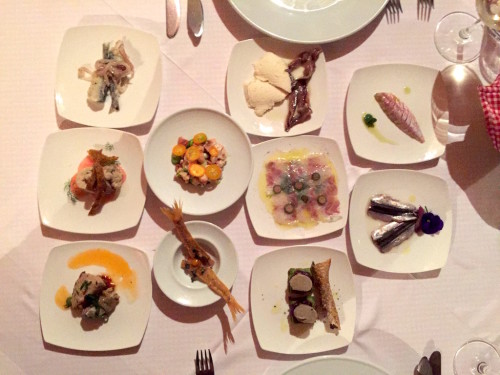 Since it was a chilly evening, we opted for a cozy-looking dining room with a fireplace. We were served by Ilya, who spoke excellent English. This came as a surprise – we had thought that we were coming to a very local restaurant – and almost put us off. Perhaps Batelina was no hidden gem after all, and that perhaps we were in for a meal of “tourist fare”. As became quickly apparent, this was an unnecessary worry: we had the finest seafood dinner of our lives.
Since it was a chilly evening, we opted for a cozy-looking dining room with a fireplace. We were served by Ilya, who spoke excellent English. This came as a surprise – we had thought that we were coming to a very local restaurant – and almost put us off. Perhaps Batelina was no hidden gem after all, and that perhaps we were in for a meal of “tourist fare”. As became quickly apparent, this was an unnecessary worry: we had the finest seafood dinner of our lives.
I believe that one’s enjoyment of any experience in life depends at least as much on the setting, the circumstance, and your expectations as it does on the raw nature of the subject itself. The subject in this case was, first, the recommended starter selection – on this day, ten small dishes featuring the day’s catch, each one a culinary jewel coming out of the treasure chest of the chef’s imagination. For our main dishes, we chose scallops and clams. For desert, we picked mascarpone cream with wine-cooked figs and homemade biscuits.
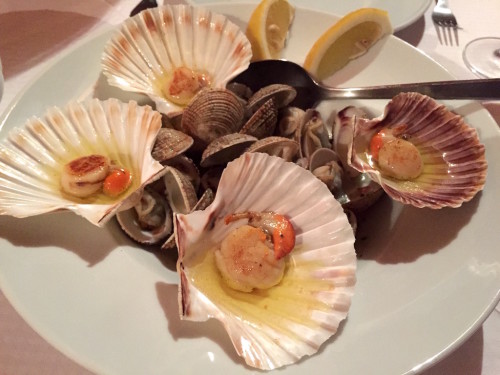 What made this evening such an utter delight? Was it that every bite enchanted our palates? Yes, indeed. Was it the complete absence of pretension? Was it that there was no Michelin, no Gault Millau, no Falstaff, no accreditation whatsoever in sight? Was it the story of Danilo, the fisherman owner of Batelina, and David his motorcycle-loving son and the current chef who joined us after dinner for a chat? I don’t know except that this evening has engraved itself forever in my memory.
What made this evening such an utter delight? Was it that every bite enchanted our palates? Yes, indeed. Was it the complete absence of pretension? Was it that there was no Michelin, no Gault Millau, no Falstaff, no accreditation whatsoever in sight? Was it the story of Danilo, the fisherman owner of Batelina, and David his motorcycle-loving son and the current chef who joined us after dinner for a chat? I don’t know except that this evening has engraved itself forever in my memory.
“How do you find a place like this?” I’m often asked. In our world of search engines, there is a belief that “you can find anything on the internet”. By now, I assume you will have googled “Batelina” and, voila!, there it is, you found it and with that “About 46,700 results (0.73 seconds)”. But Donald Rumsfeld comes to mind:
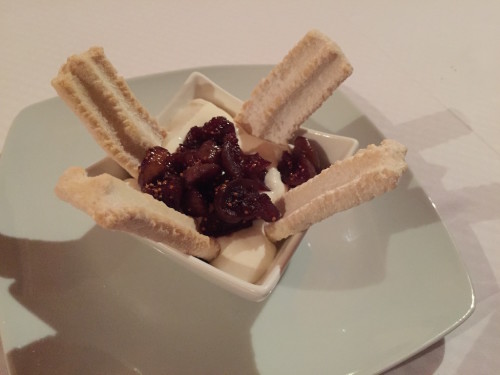 “There are known knowns. These are things we know that we know. There are known unknowns. That is to say, there are things that we know we don’t know. But there are also unknown unknowns. There are things we don’t know we don’t know.”
“There are known knowns. These are things we know that we know. There are known unknowns. That is to say, there are things that we know we don’t know. But there are also unknown unknowns. There are things we don’t know we don’t know.”
The magic of travel is that of turning some of the world’s unknowns – whether known or unknown – into knowns, the process of discovery that begins with a hunch, stops along the way at points of reference, and ends with an experience you’re dying to share. It’s that feeling of wonder about what “lies around the corner.” The hunch gives you the feeling that there is something out there waiting to be discovered. The points of reference, otherwise known as “friends”, are lighthouses that guide you along. And the discovery ends with your personal experience, which is when you know whether your hunch was right, whether your friends know you well. Sometimes, the answer is no and you move on. At other times – at times like Batelina – the answer is a resounding yes and you linger to tell the story.
Come and visit Istria while I feel it to be true that “rarely have so few known so little about a place that offers so much.”
P.S. My research was for a new On the Road Experiences itinerary: “Austrian-Hungarian Lands: A driving holiday (Part I)” that will wind through the Czech Republic, Austria, Slovenia and Croatia. E-mail me ([email protected]) if you’d like to be among the first to hear more about our newest European journey.
Posted on 29 Apr, 2016
Something seemed different here. The previous evening, we had crossed the border from Slovenia into the Croatian region of Istria, a triangular peninsula that points south into the Adriatic. After driving south for a little while, Angie and I stopped at San Rocco, a small hotel in the small town of Brtonigla in the triangle’s northwest corner.
A friendly receptionist greeted us and helped us check in. The receptionist turned porter and helped us carry our bags to the room. Then, when we came down for dinner, the porter had become our waiter, expertly explaining all the dishes and, to Angie’s delight, how each of them was made. He went on to recommend superbly matched glasses of wine for each course. When Angie observed that had she rarely met a waiter who knew so much about the dishes he served, we discovered that, in fact, our receptionist-porter-waiter, Teo, was also the chef. And, as it turned out the next morning, he is also the third in a story of four generations.
Over the years, I’ve lived in quite a few different countries: Austria, France, America, Japan, and China. Living in each meant, of course, moving from place to place. There is, as we learned after breakfast, another way of living in different countries. Teo’s grandfather was born in the same house in Brtonigla, then part of Austria-Hungary. By the time Teo’s father was born, Brtonigla had “moved” to become Italian in the inter-war years. Teo was born in the same place, which was then part of Yugoslavia. His son, net yet a teenager today, came into this world when Brtonigla had become part of Croatia.
With the family’s youngest generation playing in the dirt of a shallow pit that is destined to become the hotel’s new swimming pool, as we sat and talked with Teo and his father, Tullio, two things became evident: one, clearly stated, was that the family is more optimistic about the future than they can remember; the other, not stated but felt, was that they were filled with tremendous pride in their homeland, and in particular the produce that springs from Istria’s fertile land and surrounding sea, and the traditions that turn the harvest into culinary treasures.
The sea provides excellent langoustines, oysters and fresh fish; while the land offers asparagus, truffles, olive oil, wine, and ham – all of which are the pride of Istria’s inhabitants. This strong feeling of pride is tinged with a sense of injustice. Talk to Istrian truffle hunters and they will tell you, without any hesitation, that their truffles are at least as good as the ones from Alba: “In fact, some Piedmontese truffle merchants come to Buzet to buy our white truffles!” Talk to an olive oil producer – in our case, the producer of one of the world’s best olive oils, as ranked by expert Marco Oreggia – and he will say that in Roman times the best olive trees were moved within the Roman Empire from today’s Istria to Italy. Everyone seem to be saying that little Istria has battled for centuries against overwhelming odds to put itself on the culinary map.
But put itself on the map it will. In preparation for the trip, I read a charming article, entitled “Istria is not the new Tuscany”. It seemed to suggest that Istrians needn’t look to Italy to learn how to attract visitors and that their culinary heritage is worthy of recognition on its own terms. However I disagreed with the author’s conclusion that “No, Istria is not the new Tuscany.” Instead I feel that it’s more like the old Tuscany, devoid of crowds and brand names and redolent of “how things used to be”. Not to mention – though this is a story for another time – the peninsula’s traffic-free roads and back roads are a pure joy to drive…
P.S. My research was for a new On the Road Experiences itinerary: “Austrian-Hungarian Lands: A driving holiday (Part I)” that will wind through the Czech Republic, Austria, Slovenia and Croatia. E-mail me ([email protected]) if you’d like to be among the first to hear more about our newest European journey.
